Visiting America's Loneliest Town in One of the Last Traditional Sports Cars
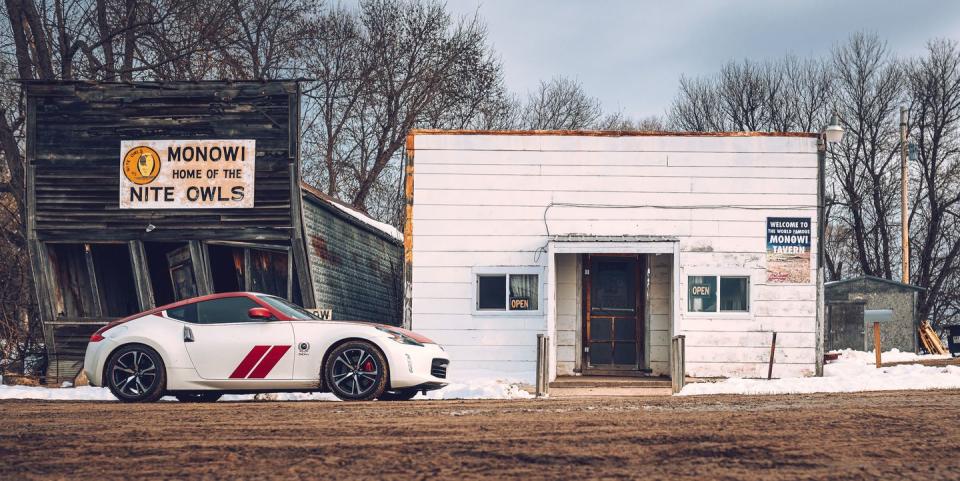
After long hours of plains, the Monowi Tavern comes up fast enough to take you by surprise. You round a bend on Route 12, The Outlaw Trail Scenic Byway, and there it stands. One lonely building, sparsely lit against the cold Midwestern night, the only thing left in the smallest incorporated town in America: Monowi, Nebraska, population one.
This story originally appeared in the March/April 2020 issue of Road & Track.
That one is Elsie Eiler, 86, found inside behind the bar. She grew up in Monowi, spent basically her whole life here. As the owner and only full-time employee of the tavern at the crossroads, she keeps the idea of the town alive. I road-tripped to the northeast corner of Nebraska to meet Elsie, and to see what it looks like to hang on to something on the verge of fading out. Monowi—pronounced “MON-oh-why”—is nestled in the far north of the state, up where the Missouri River cuts a wobbling border with South Dakota, miles from the interstate and hours from anything resembling a city. I avoided the highway as much as possible, burning miles on two-lane state routes, driving another idea left to dwindle and fade: a Nissan 370Z, the last of the traditional Japanese sports cars.
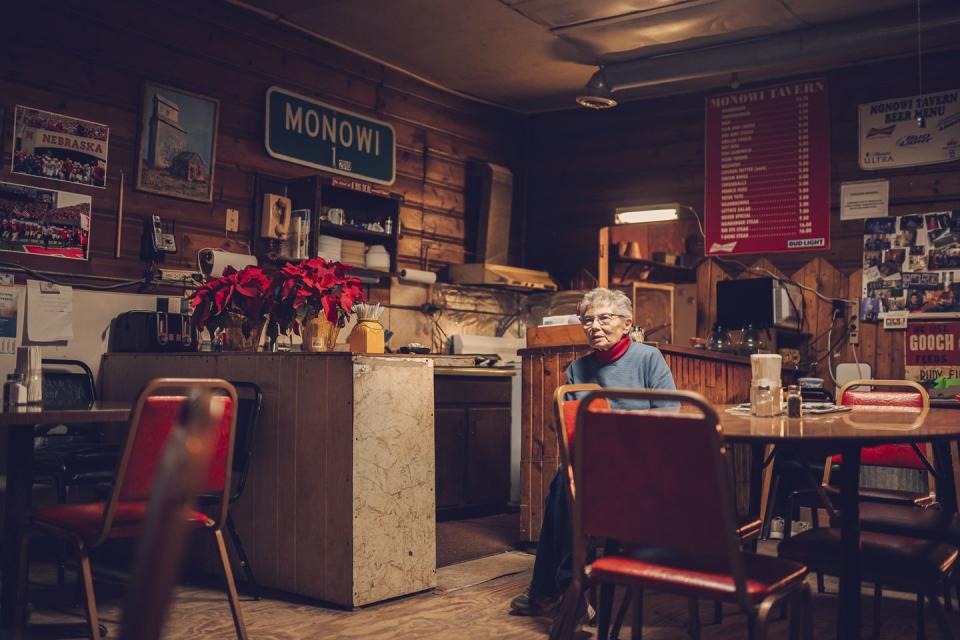
The Midwest is rarely sports-car country. Topography like a dinner table and roads you could trace with a T-square aren’t exactly a frolic in a low, rear-drive coupe during deep winter. But joyless practicality is why sports-car sales have all but dried up as automakers cough out endless variations on the SUV. The result is automotive monotony, the blandification of America’s roads.
It wasn’t always this way. The 370Z descends from the Datsun 240Z, the first Japanese sports car to bullseye the American market, where it helped launch a revolution. Over a span of more than 30 years, Japanese carmakers giddily presented us with stylish, attainable, reliable, and desirable two-doors that pushed the state of the art. The better ones became some of the most iconic enthusiast machines of the 20th century.
That was then. The Mazda RX-7 and -8 are dead. Fast Mitsubishis are a dim memory. The new Supra is a cosplaying BMW and, like the Nissan GT-R, priced out of reach for most enthusiasts. The Z, the alpha of affordable Japanese sports cars, seems destined to become the omega.
My 370Z was a 50th Anniversary model. Two-tone paint and special badges set it apart, with hash marks on the doors referencing the 1970s BRE race cars that gave Datsun enthusiast cred. The Nissan attracted the best kind of attention. A diner cook saw me pull up and came to my booth to share old street-racing stories. Outside a pool hall, sneaking between three-quarter-ton pickups in the parking lot, the big-hipped coupe made every shivering smoker’s head pivot. I stopped for the night at a casino hotel and the security guard left his post to admire the Z, leaving the gaming floor vulnerable to bandits. Folks didn’t always know exactly what the rolling candy cane was, but its low roofline and racing stripes evoked many memories.
It certainly did for me. Two seats, a stick shift, and a reach-back trunk under glass made me think of my father. When he was my age, my dad had a wife, a first son, and an RX-7. He thought a bright-red sports car was a natural choice for a man on the rise, happily at work building a career and family. The Mazda spoke well of the guy behind the wheel—no self-serious BMW yuppie or muscle-car mook here, but a man enjoying life. I’d ride shotgun, helping my dad shift gears, my tiny hand under his. After 30 years, I can still smell the leather and see the dashboard vents that sat at a three-year-old’s eye level.
My parents weren’t irresponsible, of course. My kiddie seat fit nicely in the back of my mom’s Camaro, where it didn’t seem at all out of place. Family friends would stop by in Nissan 240SXs, Fox-body Mustangs, the occasional Corvette or Mitsubishi 3000GT. These weren’t die-hard car enthusiasts, just people with a little money and style.
It seems foolhardy now, hanging on to the sports-car life with a kid in tow. The mere possibility of an eventual child seat and my friends today flee into SUVs, crossovers, cute-utes. Overweening practicality, often in the form of the vague threat of a blizzard someday, has steamrolled automotive adventurousness. Choosing a car that can’t fit an entire Playskool kitchen in the trunk now seems a lifestyle commitment on par with a neck tattoo.
Still. In 30 years, what middle-aged duffer will point to a bulbous old two-box and say, wistfully, “My folks had one just like that, in some gray or other”?
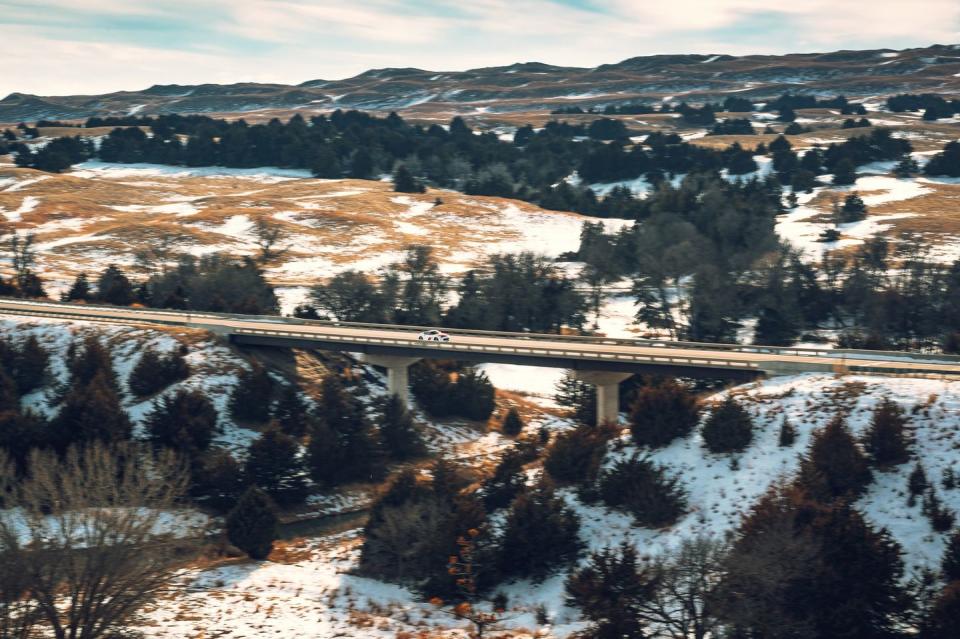
Pulling into Ogallala, about four hours west of Monowi, I found dinner at the Front Street Steakhouse & Crystal Palace Saloon, a cowboy-themed restaurant, bar, and showhouse built like a Western movie set, complete with barbershop and jail. Tamara, a rancher and state park superintendent, sat at a table behind me with her husband and daughter. She overheard me asking what to see in nearby North Platte and, with a few quick text messages, arranged a private tour of Buffalo Bill Cody’s mansion and ranch. The next morning I met her friend Adam, who oversees the Buffalo Bill Ranch State Historical Park, and he showed off Bill Cody’s home and all kinds of artifacts from Cody’s years touring the world with his traveling Wild West shows.
Buffalo Bill was a complex figure. He came from a family of abolitionists and fought with the Union Army during the Civil War. As an Army scout, he participated in the massacre of Native American tribes but later became a champion of Native American rights. He earned his nickname as a prolific buffalo hunter during an era that nearly saw the extinction of the species, but was a conservationist who helped establish modern hunting regulations. He was above all a showman and tireless self-promoter. Much of his legend was half-truths and exaggerations, and his Wild West tours brought a sensational view of frontier life to audiences across America and into Europe. Every story or song that draws on the lone cowboy motif owes him a heavy debt. Bill Cody was one of the first to recognize and capitalize on the marketing power of the Western legend, the rugged myth that makes suburban Americans drive pickup trucks to their desk jobs.
Funny thing: Rambling toward Monowi, I was certain I was headed for the heart of truck country. There were pickups, to be sure, but what I found was a surprise haven of the traditional sedan. Every restaurant, gas station and town square offered up a cornucopia of domestic four-doors—stalwart old Buicks and Pontiacs, haggard Tauruses, and, in the little town of Lynch, one astoundingly well-preserved Ford Tempo. Seems in ranch country, a gas-saver sedan is better for running errands in town.
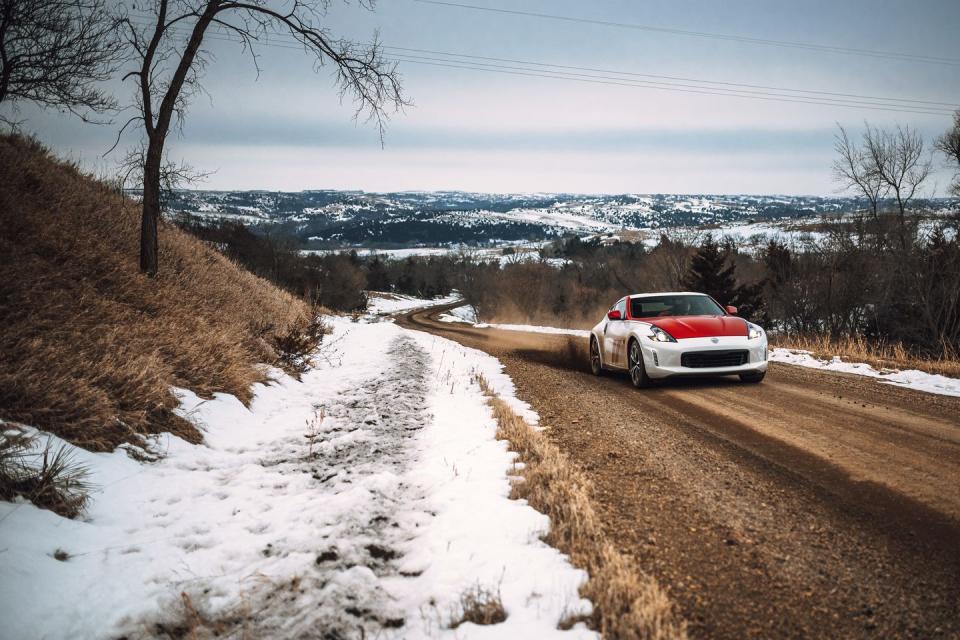
America likes to think of itself as a nation built on small farms. We’re told the moral heart of our country lives in the hardworking middle, in family-run ranching and agriculture. It’s a romantic image, and the proud people who actually embody it perform hard, honest work. But that group represents a tiny slice of America, one shrinking by the day as giant agribusiness overruns everything. That’s what happened in Monowi.
“It always seemed to me like the Second World War made a big difference,” Elsie tells me over Busch Lights. Young men left Monowi to fight, and many never returned—some lost to combat, most to the call of burgeoning postwar suburbs. Those who stayed needed more acreage, more machinery, more everything to keep their farms competitive. For many, that wasn’t an option. The small-time farmers and ranchers who still keep at it today usually need second or third jobs just to stay afloat. Elsie, the 1 in POP. 1, was born in the little town of Star, just down the road. Her family moved to a farm on the edge of Monowi when she was a toddler. She learned to read and write in the old schoolhouse that once stood at the top of the hill. In an album of century-old photos, I saw a handsome, bustling little burg of prim buildings. Daily trains rumbled through heading east and west, stopping at the grain elevator across the road from the tavern. At its peak, as many as 150 people called Monowi home.
From the 1950s to the 1970s, the number of working farms in America dropped by half. Places like Monowi were gutted. When Elsie and her husband Rudy bought the tavern in 1971, the population stood at 11. The railroad tore up the tracks shortly after. The grain elevator stands abandoned. When Rudy died in 2004, Elsie became the last person in town.
“The sad part was your young folks not being able to stay here,” Elsie says. “So many of them would love to be around here, love to have their families grow up here like they did. But you’ve got to have a job. We don’t have any industries to hold our young people.”
The Monowi Tavern, to put it gently, is not a modern place. It smells like 50 years of deep-fryer grease. The buildings next door and across the street have been abandoned for decades, one strong breeze away from toppling. The tavern, which dates to the early 1900s, doesn’t look far behind. The plywood floor has a pronounced eastward slope. Elsie was told that the part standing today was originally the upstairs, dropped to ground level when someone decided, for unknown reasons, to demolish the first floor.
“It’s drafty and not in the best of shape,” Elsie says, giggling. “But it isn’t worth putting a whole bunch of money into, either. My daughter keeps saying it’s all going to fall down around me. I said, well, then I’ll have to quit. Be sitting out in the middle of the street with my beer cooler.”
To find the restroom, you walk out through the side door and down a little dirt path to the sturdiest, most well-lit outhouse I’ve ever seen. It’s the newest part of the tavern, built a few years ago by the Nite Owls motorcycle club. They’ve been coming here since the day, decades ago, when a rainstorm kicked up during a keg party they were having in the street. Rudy invited them in, keg and all, and they’ve been meeting here since.
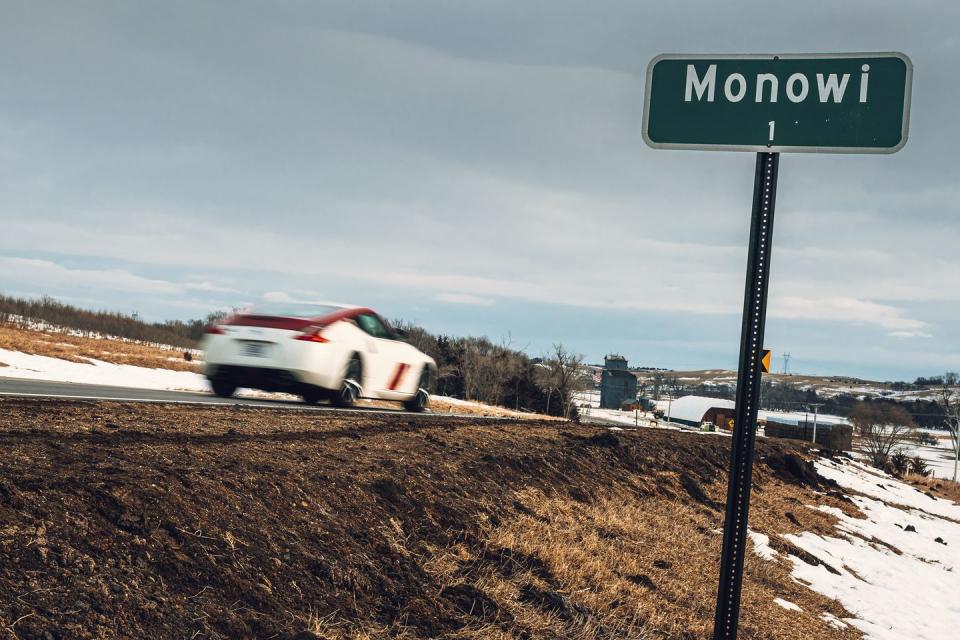
For now, the Monowi Tavern can shrug off indoor plumbing and a thousand other building-code infractions. The business is in Elsie’s name, and she’s grandfathered in, so the tavern gets to keep its ramshackle charm. But that legal tie to her also means time is running out. Elsie’s son Jack dreamed of taking over the business, but he passed away last year to cancer.
“I know once I’m gone, for somebody to take it over… you’d have to knock it down and start over,” Elsie says. “And once that’s gone, Monowi’s gone.”
For the first time in my visit, Elsie seems a little wistful. “And I always hesitate to say this, because it sounds like I’m thinking I’m important. But I’m so synonymous with Monowi anymore that it still would not be the same.”
On a walk back from the outhouse, I stopped by the 370Z and pondered. Like the tavern, Nissan’s sports car quietly soldiers on in a field of one, with all its charms and flaws. Aside from a few cosmetic updates, the car hasn’t changed since its 2008 debut. It is the first brand-new car I’ve driven in years with no touchscreen; pass on the GPS, and you just get a bare cubbyhole in the dash. The 2010 40th Anniversary Edition is all but identical to this 50th car.
Maybe Nissan’s just lazy. But maybe that’s smart. Few people buy sports cars, after all: just 2384 new 370Zs were sold in 2019. Ford averaged more F-series truck sales per day.
Look at it another way—this 370Z Sport, with limited-slip differential, big brakes and 19-inch forged Rays wheels, stickered at $37,605. Skip the anniversary bit, and you’d be out the door for 35 grand in a 332-hp rear-drive coupe that’ll see 60 mph in five seconds flat. What can compete with that? The Mazda Miata, Subaru BRZ, and Toyota 86 are affordable delights, but they can’t match the Z’s performance numbers. The Camaro, Mustang, and Dodge Challenger hit a similar balance of price and speed, but they’re battleships by comparison. Civic Type R, WRX STI? Have you no style? If you want a brand-new sports coupe in the purest sense—a front-engine, rear-drive, naturally aspirated two-seater with a stick shift—your options are 370Z or nothing.
I regarded the little coupe waiting patiently in the huge Nebraska night. Lonely thoughts crept in. Nissan can’t keep building this car forever. A new Z, designed in 2020, would probably take that familiar first step towards characterless modernity: a smaller engine for emissions and economy reasons; a turbo or two slapped on to bring power numbers up to snuff; underpinnings and whatnot shared with as many other models as possible, to reduce cost. The manual transmission would disappear—too expensive to certify, as so few people buy them when modern automatics give you launch control and better economy. And I realized: That’s the Toyota Supra. And that’s more than $50,000. Progress can only harm the Z. Forward motion has already claimed the life of every other car remotely like it.
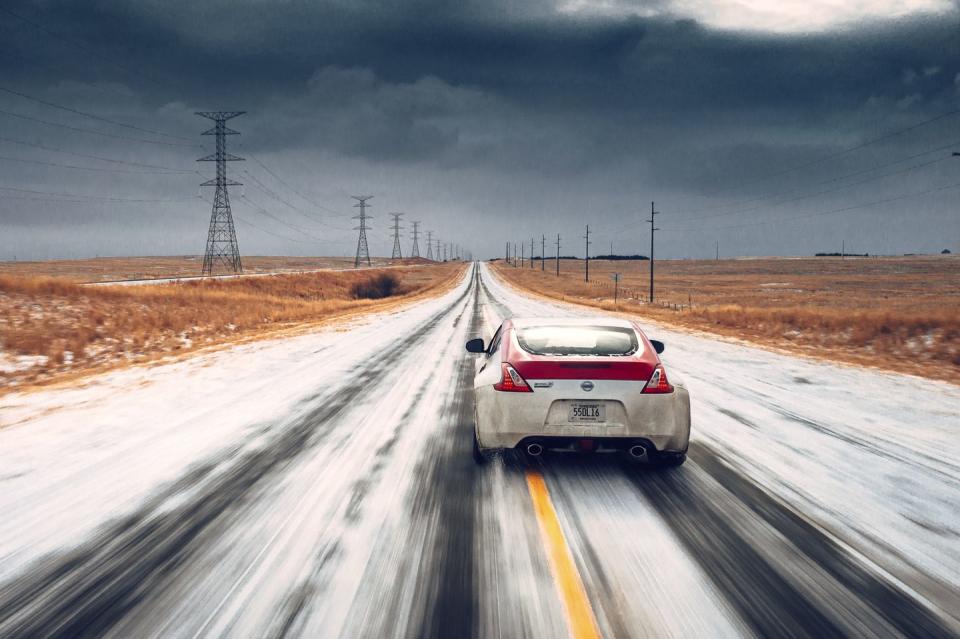
This modern world: humorless, obvious, artless, strident, derivative, ugly, entirely too full of itself. Go to enough contemporary bars and you realize they’re all headed toward one of two endpoints—insufferable cocktail apothecaries where each drink has 27 ingredients and costs as much as a sit-down lunch, or blaring sports caves where every flat surface is a TV and the only conversation is grown men hollering. We’re doing to bars what we did to country music and casual dining, reducing the organic to a cut-and-paste formula, banishing any interesting tension, commoditizing charm, and churning out lookalikes. Our gruff, brash cities and funky small towns are starting to feel like our airport terminals: hollow, ersatz and indistinguishable.
I ask Elsie if she ever plans on quitting. She says the question comes up often, from regulars afraid of losing the place as well as tourist gawkers like me. Everyone who values a town of one little old lady and a tavern that opens up at 9:00 AM, six days a week.
One of two things will happen, she thinks. Every October, her liquor license comes up for renewal. The day will come when she has to decide whether to get licensed for the 51st time. Fifty years to the day from when a husband and wife took over the Monowi Tavern seems like a poignant moment to hang it up. “Either that,” Elsie says, “or my age will get me.”
If you’re wondering why Elsie never left Monowi, consider a story. Her old beer cooler finally conked out this past December. The news got around, and a crowd soon materialized. They spent two afternoons, New Year’s Eve and New Year’s Day, tearing out the old unit and installing the new one. Also drinking the beer before it had a chance to get warm.
“You can’t beat that,” Elsie says. “Why would I want to go anywhere else?”
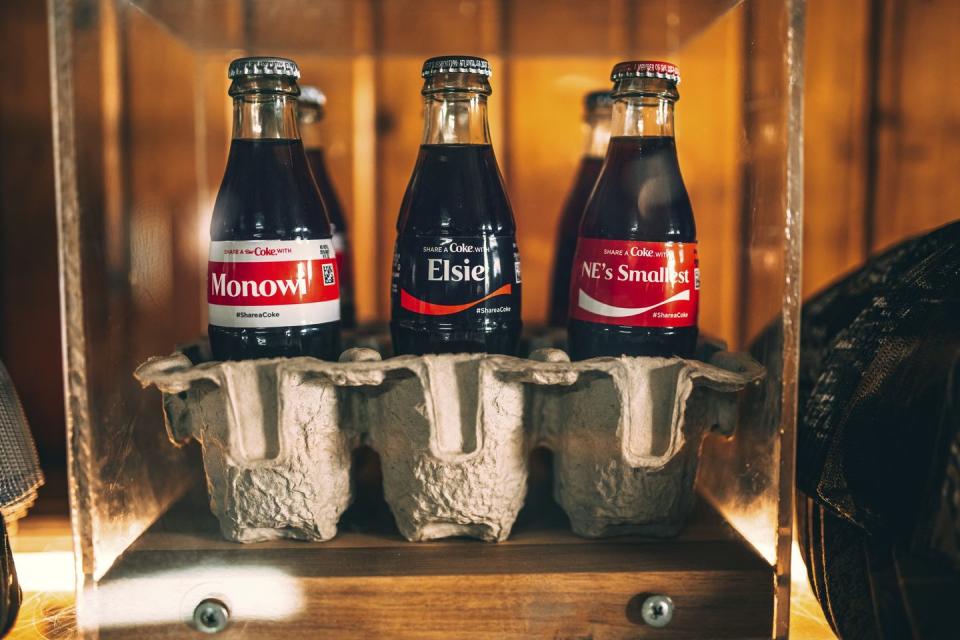
there’s a sweet thing that happens on eastern Nebraska’s rural two-lanes. Just about every driver who passes raises a finger or two off the top of the steering wheel, a casual wave. And then I was back on the interstate, six lanes of cookie-cutter pickups and SUVs, every off-ramp with a handful of businesses plucked from a rotating cast of ubiquitous franchises. Nobody waves or nods. You’d look like a fool if you did.
The Monowi Tavern will disappear. Elsie’s pragmatic—“I can’t worry about it after I’m gone,” she says. But she has a stack of guest books reaching back more than 15 years, documenting the thousands of visitors who have shown up every week, from nearly every state in the union and dozens of countries. They come for something universal. A few days after I got home from Nebraska, a rumor lit off in the automotive world. They say Nissan is quietly working on a new Z car, powered by Infiniti’s 400-hp, twin-turbo V-6. Prototypes have been spied lapping the Nürburgring. They say the fastback profile and the manual transmission will stick around, and that the styling will be a nod to the original 240Z. I need not have worried. The 240Z was so good that it changed an industry. A thing like that doesn’t just go away.
Which is why, by corollary, by the transitive property, and by sheer intuition, I absolutely believe that something will take the place of the Monowi Tavern. Of course it won’t be the same; it may not even be a bar. But what that building and the woman inside bring to the community is more than just beer. Whoever provides that, however they go about doing it, they’ll be continuing the work that Rudy and Elsie Eiler did for decades. If they’re very lucky, that person will have met her, and they will have taken some inspiration from the moment. The woman who makes up the beating heart of the smallest town in America.
Elsie Eiler, in the tavern that keeps Monowi alive.
You Might Also Like

 Yahoo Autos
Yahoo Autos 